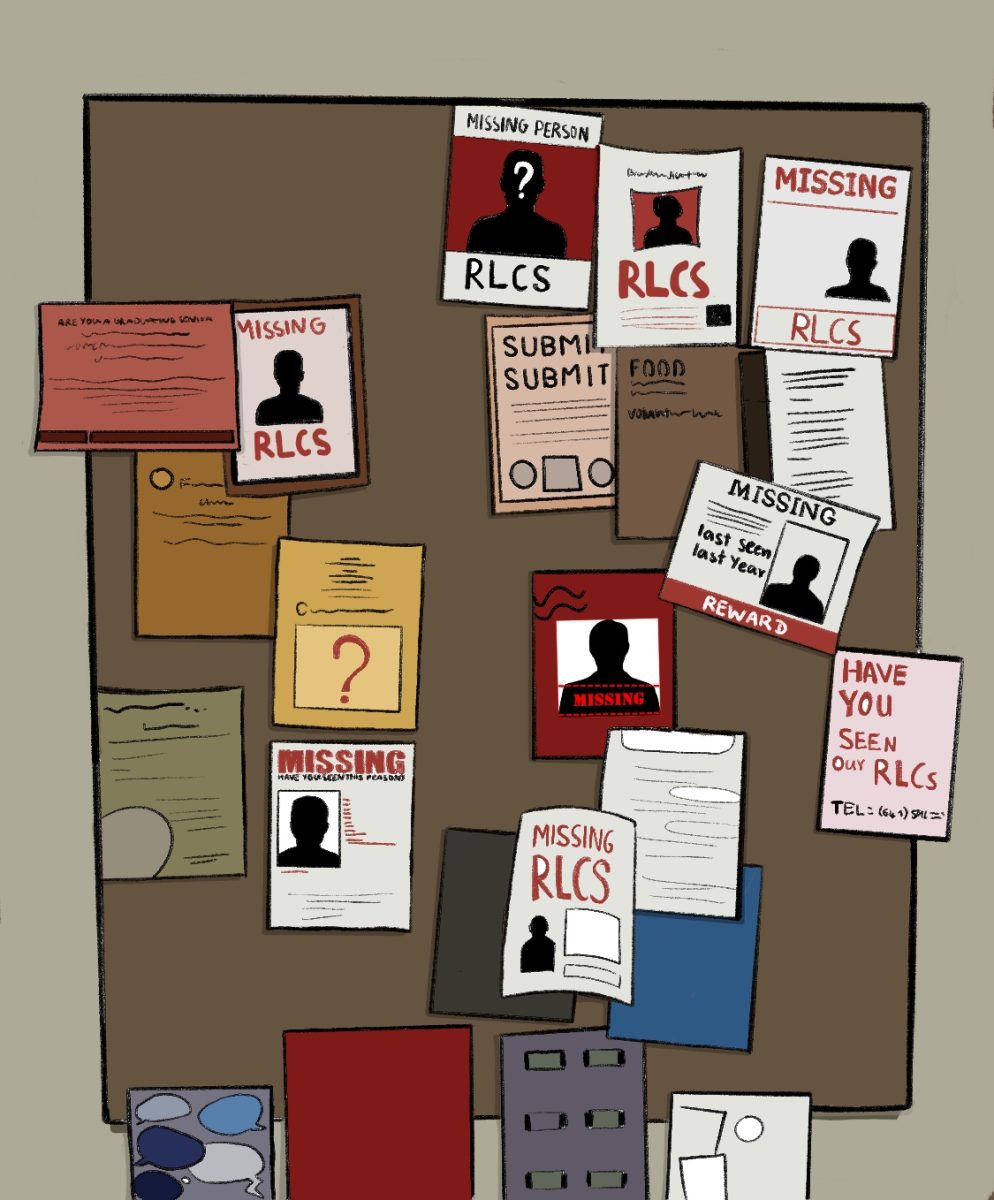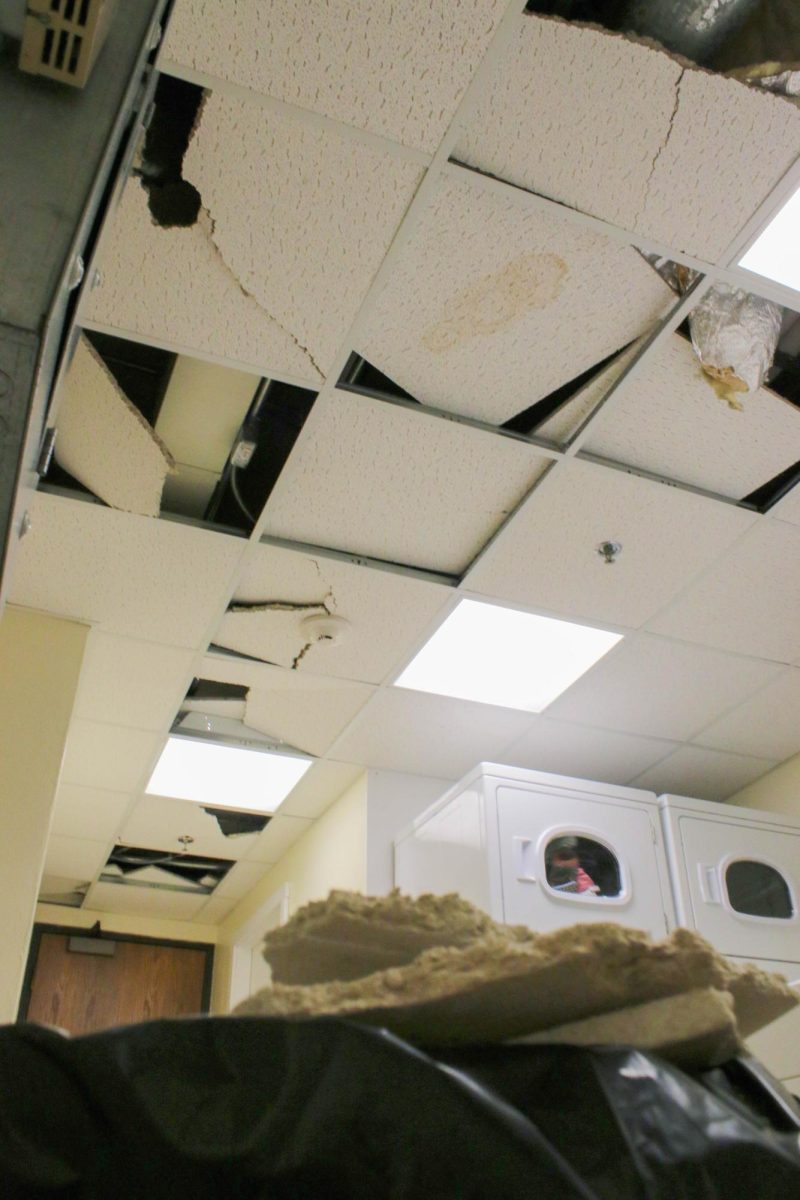Bryan Boyce ’08 spent the fall and spring after his senior year in Lesotho, teaching English, Science and Math at St. Rodriguez High School through the Grinnell Corps program. Grinnell Corps has been working through this Catholic all-girl high school for the last 12 years. This week, Boyce was one of three fellows who came to campus to speak about their experiences in front of the campus at large. During his time at Grinnell, Boyce was a cross-country athlete and English major. He now works for Teach for America at a Native American reservation in South Dakota.
Grinnell College has created six one-year, post-graduation service programs for graduating students. The programs focus on subjects such as teaching, conservation-related efforts, local anti-poverty agencies and housing reconstruction organizations. Currently there are six program locations. Grinnell Corps is located in Grinnell, Lesotho, Macau, Namibia, Nanjing, China and New Orleans.
Once the current fellows complete their fellowship year, Grinnell Corps will be discontinuing the Macau Program and implementing a new program in Chiang Mai, Thailand.
What part of your Grinnell education helped you most in Lesotho?
I think a debate that a lot of students go through at Grinnell is that of cultural relativism. Do I accept something that I think is wrong, like beating students, as someone’s culture, or do I make an absolute value judgment on that. You engage in that in a lot of classes, whether that’s English or Anthropology or whatever, and I think where a fellow fell on that debate informed their experience of how they interacted with the teaching community there.
With the example of students being beaten, of course there’s been Grinnell students in Lesotho for 10 years, and I think all of them have been opposed to corporal punishment. That’s something that’s hard to just see and not do anything about, but at the same time, the efforts to post articles about how this is wrong and damaging and how it needs to be changed haven’t been that effective. If you begrudge that [aspect of teaching] to the other teachers, it can hurt your relationship with them, so I think finding creative solutions to something like that was a big deal.
And you learned some strategies for that at Grinnell?
I don’t know about that, but it did get it on my radar. If you came into a class where students had been beaten, you could use it as a teachable moment, like, ‘did you like being beaten’? They’d usually answer ‘no.’ ‘Well, guess what, I can’t control whether these teachers are going to beat you, but some of you are future mothers, some of you are future teachers, and I tell you that I think it is wrong to beat someone.’ This would give them a chance to reflect on the beating itself rather than what they had done wrong. ‘So I challenge you to break this cycle. It’s going to be hard– it’s going to be natural for you to want to beat, because that’s what happened to you, but that is something that you can change.’ So that’s something that at least thinking about over the course of college prepared me to deal with.
Maybe something like self-governance?
Hmmm, self-governance? Maybe there’s something to that. Finding creative solutions to problems on your own, without running to mom and dad? That is something I’ve definitely taken away from Grinnell.
More broadly, have Grinnellians been good community service role models in the outside world?
I think so. Something that drew me to this college was a very specific, articulated mission of community service, and valuing service for others, and I think it’s a place that has an office of social commitment, and when I came and visited, I was like, ‘Wow, there’s a building dedicated to doing this kind of good work!’ That’s the program that sent me to Grinnell Corps. So yeah, I think the College does a good job of providing these opportunities to students. My impression of students is that they value doing good things in the world, however that takes shape. That’s one of the things you can take out into the world.
Do you feel like most students you knew at Grinnell took advantage of those opportunities?
Not everyone. It sometimes seemed like the same people doing community meal, and alt-break, and doing all sorts of things like that. I’d definitely like to see more participation and more of a presence from other people, and to see it valued more by the administration when they make funding decisions and stuff like that. There’s always room for improvement. It’s a part of the College that could [and] should continue to be a focus.
Do you think community service has been a positive way to transition into the ‘real world’?
The cool thing about “Corps” jobs is that you don’t need any experience to do them. If you have that spirit and some qualifications and the desire to do good things, there are a lot of avenues to do that. And being surrounded by a community of people that are also doing that can kind of help bridge that transition from a kind of community like Grinnell to life in the real world, or work.
Do you have any sort of advice for other Grinnellians, in general?
Yeah, so in Grinnell you have like time requirements, like go to class for two hours each day, and then use the rest of your unstructured day to read, or do an activity, or hear a speaker. Like every hour at Grinnell, there are five or ten things going on, that if they were happening in South Dakota, I would have on my calendar for weeks in advance, and be prepared for them, and be gung-ho about them. The concentration of resources and ideas here is just phenomenal.
Something that I have learned to value while not being in college is how incredible of a privilege and opportunity it is to have most of your day available to be determined by you, how you’re going to spend it, to have those resources at your fingertips here. There’s also the matter of it costing $40,000 a year. Make use of that, seriously. And to check out the print study room.
In Bucksbaum?
No, in Burling. When the lady’s working in there, whoever has the white gloves on, and handles the prints, she’ll show stuff to you. There’s some pretty Rauschenberg, I don’t know what they are, prints down there. It’s original art, sitting underneath where you work, and a lady can call it up and show it to you and you can look at the page that that artist touched, and I think that’s pretty cool. It’s a hidden secret of Grinnell.
—Compiled by James Anthofer
Grinnell Corps Return, Reflect, Recruit
December 4, 2009






























































